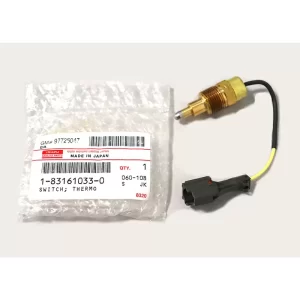Introduction
In modern vehicles, engine management systems are responsible for regulating the performance of the engine. To achieve optimal performance, these systems rely on a range of sensors that feed important information to the engine control module. In this article, we’ll explore the most crucial sensors in an engine management system and how they work.

1.Air Flow Sensor
The air flow sensor is responsible for measuring the amount of air entering the engine, which is necessary for fuel injection and ignition timing. Two common types of air flow sensors are mass air flow (MAF) sensors and manifold absolute pressure (MAP) sensors. MAF sensors measure the mass of the air being drawn into the engine, while MAP sensors measure the pressure of the air in the intake manifold.
2.Oxygen Sensor
The oxygen sensor, also known as the O2 sensor, monitors the amount of oxygen in the exhaust gases, providing feedback to the engine control module to adjust the air-fuel ratio. This helps ensure that the engine runs efficiently and minimizes emissions. The O2 sensor can be located either upstream or downstream of the catalytic converter.
3.Throttle Position Sensor
The throttle position sensor (TPS) measures the angle of the throttle plate, informing the engine control module of the driver’s acceleration demands. This allows the engine to adjust the air-fuel ratio and ignition timing in response to the driver’s actions, ensuring smooth and responsive acceleration.
4.Coolant Temperature Sensor
The coolant temperature sensor measures the temperature of the engine coolant, which is vital for maintaining proper engine temperature and preventing overheating. The engine control module uses the information from this sensor to adjust the air-fuel ratio, idle speed, and other engine parameters.
5.Crankshaft Position Sensor
The crankshaft position sensor (CKP) tracks the rotational speed and position of the crankshaft, allowing the engine control module to monitor the engine’s performance and make adjustments as needed. The CKP sensor is also used for determining ignition timing and fuel injection timing, making it an essential component in the engine management system.
Conclusion
The sensors in an engine management system work together to ensure that the engine runs efficiently, safely, and reliably. By monitoring critical parameters such as air flow, oxygen levels, throttle position, coolant temperature, and crankshaft position, these sensors help the engine control module make the necessary adjustments to optimize engine performance. Understanding how these sensors work and what they do can help vehicle owners and mechanics diagnose and troubleshoot engine issues more effectively, ensuring that the engine runs smoothly and reliably for years to come.


